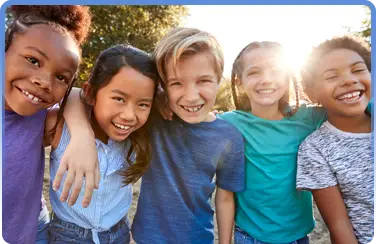Disney's "Safety" and how it relates to child welfare in VA

Disney's Safety tells the inspiring true story of Ray McElrathbey, a Clemson football player who became guardian to his younger brother instead of letting him enter foster care. The film reflects real situations Virginia families face when substance use or crisis separates children from parents. Kinship care placement with relatives or close friends helps minimize trauma, build trust, and keep children connected to their family and culture. This story highlights the importance of kinship care in child welfare today.
Disney's movie Safety how Kinship care is vital in Virginia
From the Disney synopsis, this film “is a drama inspired by the empowering story of former South Carolina Clemson tiger safety Ray McElrathbey, a young man facing a series of challenging circumstances, whose dedication and persistence to help him to triumph over repeated adversities. Aided by his teammates and the Clemson community, he succeeds on the field while simultaneously raising and caring for his 11-year-old brother Fahmarr.”
This account of Ray McElrathbey’s life may be fictionalized, but the child welfare system’s film themes and what youth involved in it may experience are relevant in our society.
While watching the movie, the viewer sees Ray, a college student, gain temporary, then permanent, custody of his younger brother, Fahmarr. Ray learns that Fahmarr has been left without proper child care after their mother is arrested and enters a drug rehabilitation program due to struggles with drug addiction. Unfortunately, this is not an uncommon scenario for many youths across the country and in Virginia’s Commonwealth. According to the Virginia Department of Social Services, as of January 1, 2021, 30% of youth in foster care in Virginia were in foster care due to parental substance use, with more potentially in care due to consequences of substance abuse, such as neglect.
Upon the brothers learning that their mother has entered a drug rehabilitation program, leaving Fahmarr without his only guardian, the Department of Social Services determines that Fahmarr will be placed in a foster home. Rather than let their brother go into foster care, Ray asks if the family friends would be able to take him in as kinship caregivers. Ray volunteers therefore, no new foster parents or adoptive families are needed. This scene mirrors what happens with many youths who enter foster care on an “emergency” basis (emergency meaning there was little to no preparation for the possibility of youth entering care). Before a youth formally enters foster care, the Department of Social Services will ask the parents/guardians if there are any family members or close friends who would take custody of the youth.
When it comes to portraying youth who are involved with the child welfare system, the movie highlights some experiences that many youth face:
Parentification
Ray ultimately becomes Fahmarr’s adoptive parent, as he is over the age of 18 when Fahmarr becomes intertwined with the child welfare system. Often, when youth enter care together, the eldest had already begun to take on the role of protector and provider, forsaking their own needs for their younger siblings. Therefore many times, no background checks are needed since Fajmarr still has a permanent family members left.
School disciplinary issues
We see Fahmarr getting in trouble at school often during the course of the movie. While schools are a major resource for youth, it can be difficult to put 100% percent into the structured school setting (academically or behaviorally) when you are concerned with what’s going on or not getting your basic needs met at home.
What’s underneath the behavior? In one scene, Fahmarr gets in trouble because he doesn’t wear his gym uniform to class. He goes on to explain that he doesn’t like to store his clothes in a locker because he was concerned about having his money stolen. This was a survival tool for Fahmarr.
Trust
We watch over and over as Ray needs to figure out who he can trust, often shutting people out or trying to drive people away because up until that point, he’s only had to rely on himself. Eventually, you see Ray and Fahmarr develop natural supports (people in their lives to provide emotional and physical support) that help them thrive. It’s the small actions of giving rides to school, providing babysitting services, and even cooking meals that can help in the most challenging situations. Ray’s teammates, coaches, and the community stepped in to help when he was in need, providing a “village” to ease some of the burdens.
If there was anything I took away from this movie, other than two young men asked to take on more than most of us can imagine at their age and eventually thriving, is that we all need a village to support us in our time of need.
Disney’s “Safety” can be streamed on Disney Plus.


